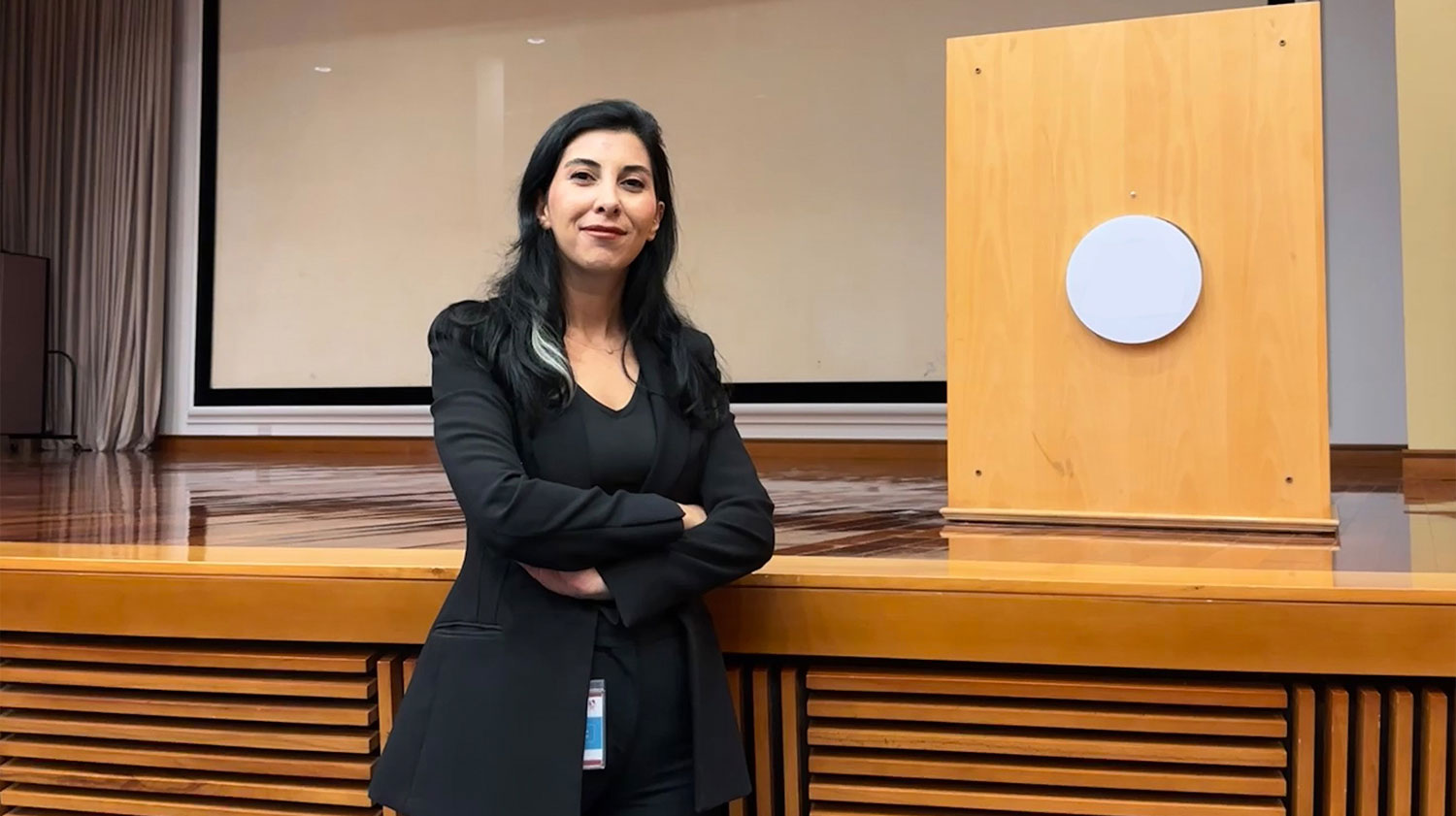
Insights
An Interview with Merve Toprak on Drug Traceability: Shaping the Future of Pharmaceutical Track & Trace Systems
We interviewed with Merve Toprak, our Project Manager, to explore the critical role of pharmaceutical track and trace systems in drug traceability and supply chain transparency. Toprak shared her valuable insights on the importance of national track and trace systems for safeguarding public health and optimizing the pharmaceutical supply chain. She underscored that these systems are fundamental in ensuring that patients receive safe and authentic medications without supply chain disruption.

Here’s the interview:
1. First of all, could you explain why drug traceability is critical in today’s pharmaceutical industry?
Drug traceability has become a foundational element of modern pharmaceutical supply chains, especially with the increasing complexity and globalization of drug manufacturing and distribution. In today’s environment, where counterfeit, diverted, or substandard medications can enter the system at various points, having a robust national traceability infrastructure, like our DrugXafe – Pharmaceutical Track & Trace System, is essential.
National drug traceability infrastructures enable regulators and other stakeholders to track and verify every unit of medication across the supply chain, from manufacturing through distribution to the point of dispensing. Such comprehensive tracking drastically reduces the risk of counterfeit drugs reaching patients. A robust platform provides end-to-end traceability through unit-level serialization, batch-level aggregation, and real-time reporting. Every transaction, whether it is production, shipment, return, or dispensation, is captured via integrated services and centralized compliance monitoring. The system leverages GS1 Data Matrix codes, unique serialization numbers, and structured data event reporting to create an unbroken chain of custody for each product. In brief, drug traceability enhances supply chain efficiency and public trust, improves operational performance across stakeholders, reduces discrepancies, increases recall precision, and fosters greater confidence in the pharmaceutical ecosystem.
2. Beyond eliminating counterfeit and substandard drugs, drug recalls are also crucial for patient safety. How do pharmaceutical track and trace systems contribute to making drug recall processes more effective?
Drug recalls are often urgent; high-stakes events where time and accuracy are critical. Without a national traceability system, recalls tend to rely on broad estimations, which lead to slow response times, excess product withdrawal, and increased risk for patients. In practice, only affected batches are recalled, which minimizes waste and limits disruption to supply. It also allows regulators to automatically notify stakeholders through pharmaceutical track and trace system alerts.
Traditional recall methods are slow and often overly broad, resulting in delayed responses and unnecessary product removal. With an appropriate system, each medication pack can be uniquely identified and linked to the specific supply chain path it has followed. For example, DrugXafe enables granular and immediate recall actions based on serialized unit-level data. This allows the Ministry of Public Health and pharmaceutical companies to pinpoint the exact location of a faulty or dangerous batch, whether it is at a distributor, hospital, or pharmacy.
Through DrugXafe, each product unit is tracked using GTIN, batch number, and serial number. The system allows regulators to isolate affected items with high precision. The recall module, which is part of the enforcement framework, provides system-wide notifications and transaction-blocking mechanisms that can halt distribution or dispensing immediately. Moreover, it includes audit trails, consumption history, and stakeholder-specific inventory logs. These tools help determine exactly where and when each product was handled.
3. How do global crises like COVID-19 reveal the flexibility and critical role of pharmaceutical track and trace systems? How can these systems be made more resilient for similar future crises?
Global crises like COVID-19 have highlighted the importance of pharmaceutical track and trace systems in maintaining the integrity, availability, and safety of medical products. One of the clearest examples was during the pandemic in Türkiye, where the national pharmaceutical track and trace system, İlaç Takip Sistemi (ITS), played a critical role in enabling rapid, data-driven decisions and preserving public health. During the crisis, ITS supported the continuous availability of medicines by providing real-time visibility of pharmaceutical stocks across the country. This enabled the Ministry of Health to detect potential shortages early, redistribute inventory, and manage demand surges on a regional basis. As a result, major disruptions to patient access were avoided. ITS also protected patients from counterfeit or diverted medications, which became a significant global threat during the pandemic. By requiring verification of each drug unit at every transaction, it successfully blocked falsified COVID-related treatments from entering the legitimate supply chain.
The pandemic also demonstrated that systems must go beyond compliance. They need to be flexible and scalable under extreme conditions. To improve resilience for future crises, such systems can be enhanced by:
- Incorporating predictive analytics to detect supply risks before shortages occur
- Expanding the system’s scope to include vaccines and critical medical supplies
- Improving integration with e-prescription platforms and national health databases for a holistic crisis response
- Ensuring interoperability with global traceability standards to facilitate international collaboration during emergencies
4. By considering the circumstances affecting supply chains’ transparency, what are the most important benefits of implementing a national pharmaceutical track and trace system? How can the technical and operational challenges in implementing such a system be overcome to realize these benefits?
Implementing a national pharmaceutical track and trace system provides transformative benefits supporting both public health and supply chain governance. These benefits are especially valuable in settings where transparency, authenticity, and real-time visibility are essential for ensuring patient safety and systemic efficiency.
Key benefits include:
- Protection of public health by verifying authenticity at every level and ensuring that only safe, authorized, and quality-assured medicines reach patients
- Prevention of counterfeit drugs through end-to-end serialization and aggregation, which eliminates entry points for falsified and substandard products
- Full supply chain transparency that enables effective monitoring, timely intervention, and enhanced regulatory oversight
- Improved recall and risk management with batch-specific traceability that allows for rapid, targeted recalls and deactivations
- Operational efficiency and cost savings by reducing manual work, improving stock control, and minimizing waste
- Data-driven regulatory decisions supported by analytics and dashboards that enable strategic planning and trend monitoring
- Increased trust and stakeholder engagement resulting from transparency across regulators, healthcare providers, patients, and industry players
Implementation challenges, such as legacy system integration, user adoption, and data quality, can be addressed through:
- Modular deployments beginning with high-priority sectors
- Training programs and user portals with real-time dashboards
- Built-in validation engines and exception handling mechanisms to ensure data accuracy
- Strong regulatory engagement to encourage compliance and long-term adoption
Ultimately, successful implementation depends on aligning the system’s design with the operational realities of each stakeholder.
5. Tiga Healthcare Technologies’ Pharmaceutical Track & Trace System, DrugXafe, has been adopted in multiple countries. What key factors made this system successful on a national scale?
DrugXafe’s success is the result of its comprehensive design, adaptability, and focus on public health impact. It offers end-to-end traceability by capturing each transaction in the pharmaceutical supply chain, from the manufacturer to the patient. This ensures full visibility and control, helps prevent counterfeit drugs, enables targeted recalls, and supports regulatory enforcement.
The system’s flexible and scalable architecture allows it to be adapted to various national healthcare structures. Whether the logistics environment is centralized or decentralized, it can be configured to align with local workflows and regulatory policies. Furthermore, it supports seamless integration with existing health IT infrastructure, including e-prescription systems, reimbursement platforms, customs procedures, and health information exchanges. Built on GS1 standards, it ensures international compliance and readiness for future cross-border interoperability. Also, real-time analytics and decision-support dashboards empower regulators with insights that support proactive monitoring and crisis management, as demonstrated during the COVID-19 pandemic.
Operationally, the system’s success is supported by Tiga Healthcare Technologies’ robust implementation model. This includes regulatory alignment, stakeholder onboarding, comprehensive user training, and long-term technical support. These efforts ensure not only initial deployment but also sustained adoption.
6. What are some of the most exciting trends or developments you believe will significantly enhance pharmaceutical track and trace systems’ future impact?
One of the most exciting developments in pharmaceutical track and trace systems is their transformation from regulatory tools into strategic assets that support business growth, product visibility, and patient trust.
From a technology perspective, several innovations are expected to significantly expand their impact:
- Blockchain technology is gaining traction for its ability to create secure, tamper-proof product histories. It allows all stakeholders—including regulators, manufacturers, distributors, and even patients—to access a single, trusted source of information. In the future, blockchain could support global verification networks for cross-border shipments and recalls.
- Artificial intelligence (AI) and predictive analytics are revolutionizing how traceability data is used. Rather than simply identifying where a product is located, AI can detect unusual patterns, such as potential diversion, counterfeiting risks, or supply chain disruptions. These tools make it possible to respond proactively and mitigate risk before it affects availability.
- The Internet of Things (IoT) and real-time monitoring are transforming the management of in-transit pharmaceuticals. Smart sensors installed on shipments provide live data on temperature, humidity, and location. This helps preserve the integrity of temperature-sensitive products and reduces spoilage. As these technologies become more accessible, real-time condition monitoring is expected to become standard, particularly for high-value drugs.
Track and trace systems are evolving into intelligent ecosystems that support supply chain optimization, demand forecasting, and stakeholder engagement. By ensuring product authenticity, they also help protect revenue and enhance brand reputation. The future lies in leveraging these platforms to gain a competitive advantage through smart, scalable, and patient-focused solutions.

Key Points of the Interview
- Improved Drug Safety: Pharmaceutical track and trace systems are crucial in the battle against counterfeit and substandard drugs, guaranteeing only authentic medications reach patients. By providing end-to-end visibility, these systems limit opportunities for fake medical products to enter the supply chain.
- Increased Operational Efficiency: These systems significantly enhance supply chain operations, like transforming broad and slow drug recalls into swift, precise actions. This leads to better inventory management, reduced waste, and streamlined processes, ultimately cutting costs and improving overall efficiency across the pharmaceutical ecosystem.
- Future-proofing with Emerging Technologies: The future of drug traceability lies in the integration of advanced technologies like blockchain, AI, and IoT into pharmaceutical track and trace systems. These technologies will support more secure data sharing, predictive risk management, and real-time monitoring, transforming these systems into sophisticated tools for proactive supply chain optimization.
This insightful interview with Merve Toprak articulates the indispensable role of national pharmaceutical track and trace systems for drug traceability. By preventing counterfeit and substandard drugs from entering the market, these systems increase patient safety and trust effectively. Toprak’s sharing gives clarity on why implementing such systems is essential for protecting public health and wellbeing.
Let’s shape the future together, as always!








